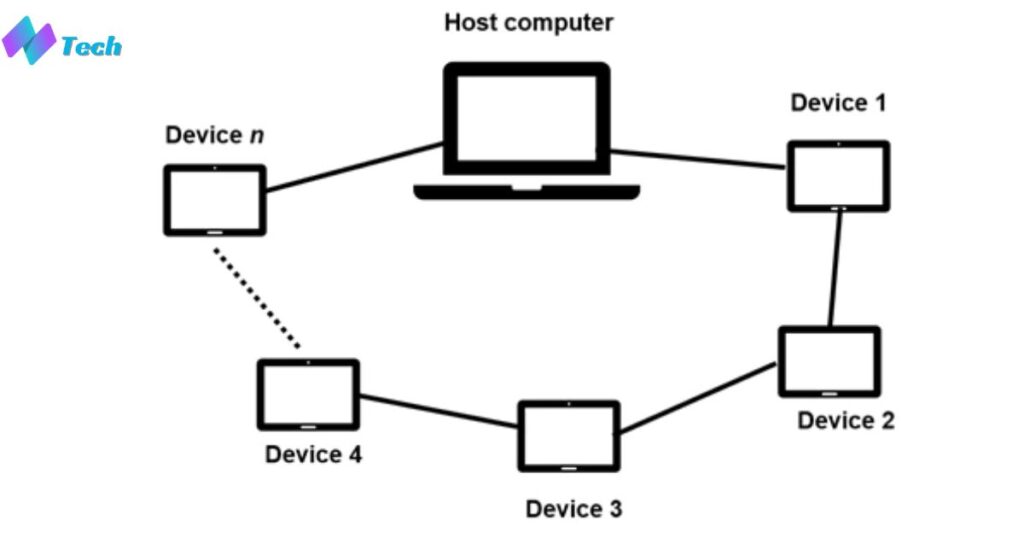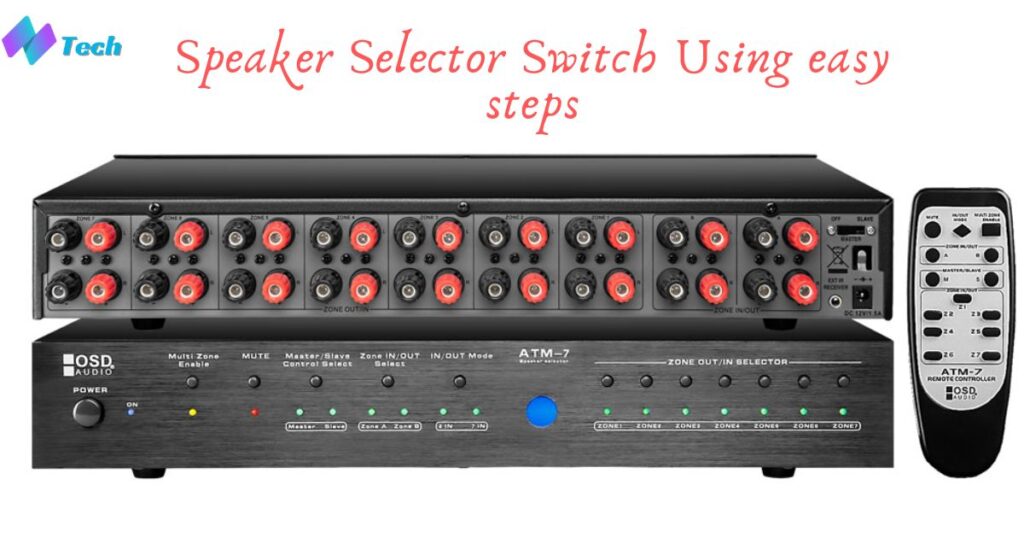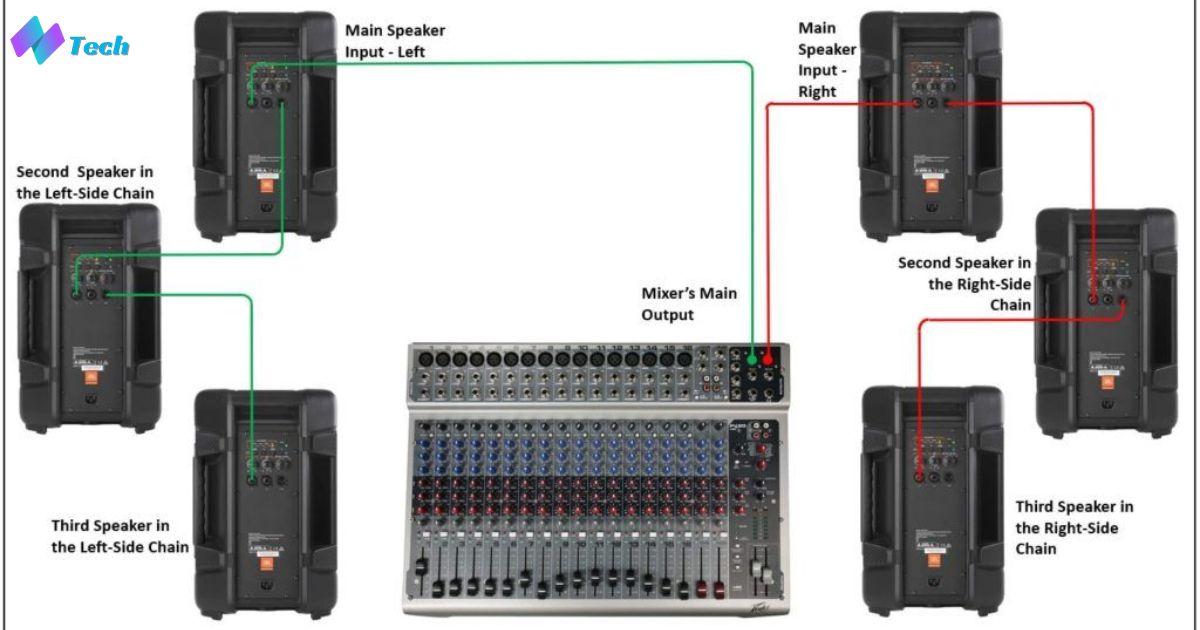Daisy chain speakers involve connecting multiple speakers in a series, where each speaker is linked to the next linearly. This configuration simplifies wiring by creating a single chain of speakers connected. It is commonly used to expand audio coverage in various settings, from home entertainment systems to public address setups.
A symphony unlocks sound by connecting multiple speakers in a daisy chain. how do amplify your audio setup effortlessly? This simple yet powerful configuration allows you to amplify your audio experience seamlessly. Dive into the world of interconnected speakers and elevate your listening pleasure with the magic of daisy chaining.
Daisy chain speakers involve connecting multiple speakers in a linear fashion, where each speaker is linked to the next in a chain. This setup simplifies wiring and is commonly used in various audio systems for easy scalability. By daisy-chaining speakers, users can expand their sound coverage and create a seamless audio experience.
How Many Speakers Can Be Daisy Chained Together?
Curious about the potential of Daisy Chain Speakers and how many can be seamlessly linked? When it comes to connecting audio devices, the versatility of Daisy Chain Speakers allows you to expand your sound system significantly.
The beauty lies in their cascading design, letting you connect multiple speakers one after another. So, how many Daisy Chain Speakers can be daisy-chained together? The answer depends on the specifications of your audio equipment and the impedance matching between the speakers.
Experiment, enjoy, and discover the perfect harmony as you explore the possibilities of Daisy Chain Speakers in creating an immersive audio environment. Dive into the world of connectivity and amplify your sound experience with Daisy Chain Speakers, the key to unlocking a symphony of audio bliss.
The Role of Impedance in Daisy Chains
In the realm of audio setups, understanding the role of impedance is crucial, especially when dealing with Daisy Chain Speakers.
Impedance, measured in ohms, dictates how efficiently electrical signals flow through the speaker system. When connecting Daisy Chain Speakers, matching impedance ensures optimal performance and prevents potential issues.
Careful consideration of impedance in your Daisy Chain Speaker configuration will lead to a harmonious blend of audio, guaranteeing an immersive and seamless sound experience.
So, delve into the intricacies of impedance to unlock the full potential of your Daisy Chain Speakers setup.
Daisy Chaining Speakers: A Simple, Straightforward Process

Daisy Chaining Speakers is a simple process that transforms your audio setup into a harmonious symphony. To begin with, Daisy Chain Speakers involves sequentially connecting multiple audio devices, providing a streamlined approach to achieving immersive sound.
Whether you are setting up a home entertainment system or configuring a professional audio arrangement, Daisy Chain Speakers offer versatility and convenience. Start by identifying the input and output ports on each speaker, then connect them in a series to create a unified audio network.
The beauty of Daisy Chaining Speakers lies in its user-friendly design, allowing even those new to audio systems to effortlessly optimize their setup. With Daisy Chain Speakers, you can expand your sound coverage without complicated wiring hassles.
Embrace the simplicity of Daisy Chain Speakers as you unlock a world of audio possibilities, making your listening experience truly seamless and enjoyable.
Daisy-chaining Active Speakers
Exploring the world of audio just got simpler with the magic of daisy-chaining active speakers. Picture this: Daisy Chain Speakers effortlessly linked, creating a symphony of sound in your space.
With the flexibility of daisy-chaining, setting up your audio system becomes a breeze. Daisy Chain Speakers not only ensure convenience but also deliver a rich, immersive audio experience.
Say goodbye to complicated setups and hello to seamless, connected audio bliss with Daisy Chain Speakers. Upgrade your sound game; it is time to daisy-chain your way to audio perfection.
Connection Diagrams for Daisy-chaining Powered Speakers

The Unlock potential of your audio system with connection diagrams designed for daisy-chaining powered speakers. When setting up your sound system, these diagrams provide a clear roadmap to seamlessly link Daisy Chain Speakers, ensuring optimal performance.
Follow the straightforward steps outlined in the diagrams to create a robust audio network, where each speaker effortlessly flows into the next.
With Daisy Chain Speakers at the core of your setup, you will experience a symphony of sound that’s both powerful and hassle-free. Elevate your audio experience by embracing the simplicity and effectiveness of daisy-chaining – your music deserves it.
Steps For Daisy-chaining Passive Speakers
- Gather Your Passive Speakers: Ensure you have all the passive speakers you want to daisy chain together.
- Check Speaker Compatibility: Confirm that the speakers are compatible with daisy chaining; not all passive speakers are designed for this configuration.
- Identify Input and Output Ports: Examine the input and output ports on each speaker to determine the correct sequence for connecting them.
- Secure Quality Cables: Obtain high-quality speaker cables with the appropriate connectors for your speakers.
- Position the Speakers: Arrange the speakers in the desired configuration, keeping in mind the location and spacing for optimal sound distribution.
- Connect the First Speaker: Use a speaker cable to connect the audio source (amplifier or mixer) to the input port of the first passive speaker in the chain.
- Link Additional Speakers: Connect the output port of the first speaker to the input port of the next speaker in the daisy chain using another speaker cable.
- Continue the Daisy Chain: Repeat the process, connecting the output of each speaker to the input of the next until all speakers are linked.
- Secure Connections: Ensure all connections are secure and snug to prevent signal loss or interference.
- Test and Adjust: Test the audio output and make any necessary adjustments to achieve the desired sound quality. Fine-tune the system as needed for optimal performance.
Daisy-chaining Powered Subwoofers
Enhance your bass game effortlessly with the technique of daisy-chaining powered subwoofers! Connecting powered subwoofers in a daisy chain allows for a seamless flow of deep, resonant bass throughout your audio setup.
Simply link one subwoofer to another, creating a robust chain that ensures consistent low-frequency performance. This method is not only efficient but also simplifies cable management, reducing clutter in your audio space.
Dive into the world of daisy-chaining powered subwoofers and experience a richer, more immersive audio experience that will elevate your music, movies, and gaming to a whole new level.
Steps for Daisy-Chaining Powered Subwoofers
| Step | Description |
| 1 | Understand Your Subwoofers: Ensure that your subwoofers have a line-level input and output. This is crucial for daisy-chaining. |
| 2 | Check Power Requirements: Verify that all subwoofers are compatible with your amplifier or receiver and that their power requirements are met. |
| 3 | Identify Line-Level Inputs and Outputs: Locate the line-level inputs and outputs on each subwoofer. The input is where the signal comes in, and the output is where it goes out. |
| 4 | Decide on Series or Parallel Connection: Determine whether you want to connect the subwoofers in series or parallel. Series connection increases impedance, while parallel connection lowers it. |
| 5 | Series Connection: If using a series connection, connect the output of the first subwoofer to the input of the second subwoofer. Repeat for additional subwoofers. |
| 6 | Parallel Connection: If using a parallel connection, connect the line-level output of your source (amplifier or receiver) to the input of the first subwoofer. Connect the output of the first subwoofer to the input of the second subwoofer, and so on. |
| 7 | Adjust Subwoofer Settings: Check and adjust the settings on each subwoofer, such as volume, phase, and crossover frequency, to ensure a balanced and cohesive sound. |
| 8 | Test the Configuration: Play audio and test the configuration to ensure that all subwoofers are working correctly and providing the desired bass response. |
| 9 | Fine-Tune Settings: Fine-tune the settings based on your room acoustics and personal preferences to achieve the best sound quality. |
Using A Speaker Selector Switch

A speaker selector switch helps you connect multiple speakers to one audio source. It lets you choose which speakers to play at any given time. Connect the switch to your amplifier, and then attach speakers to the designated terminals.
You can play music in one room while keeping another room quiet. It is a convenient way to distribute audio throughout your home without the need for multiple amplifiers. Just select the desired speaker or combination of speakers with the switch for a customized listening experience.
Step-by-Step Guide for Daisy Chaining Speakers
Identify Speaker Connections: Start by locating the input and output connections on your speakers. Ensure they have compatible terminals for daisy-chaining.
Verify Impedance Matching: Check the impedance ratings of your speakers to ensure they are compatible when connected in series or parallel. Mismatched impedance can affect sound quality.
Determine Wiring Configuration: Decide whether you want to connect speakers in series or parallel. Series connections increase impedance, while parallel connections decrease it.
Connect in Series: If using a series connection, link the positive terminal of the first speaker to the negative terminal of the second. Repeat this process for additional speakers.
Connect in Parallel: For a parallel connection, connect the positive terminals and the negative terminals together. Use jumper wires if needed. This maintains a consistent impedance level.
Check Amplifier Compatibility: Ensure that your amplifier or receiver can handle the total impedance load when daisy-chaining speakers. Exceeding the capacity may damage the equipment.
Test Speaker Configuration: Play audio and test each speaker to ensure they are functioning correctly. Verify that the sound quality is consistent across all connected speakers.
Fine-Tune Settings: Adjust individual speaker settings, such as volume levels, to achieve a balanced sound. Make any necessary adjustments based on room acoustics and personal preferences.
Optimizing Audio Quality in Daisy Chain Systems
To optimize audio quality in a daisy chain system, start by ensuring all connected devices, like speakers or subwoofers, have matching impedance levels. Keep cable lengths short and use high-quality cables to minimize signal degradation.
Position speakers in an arrangement that complements the room’s acoustics, considering factors like reflections and absorption. Fine-tune each device’s settings, including volume, equalization, and crossover frequency, to achieve a balanced sound.
Regularly check for loose connections or damaged cables that may impact audio performance. Utilize a powered amplifier with sufficient wattage to drive all connected speakers effectively. Test the entire system by playing a variety of audio sources and genres to identify and address any inconsistencies.
Consider room treatments, like acoustic panels or rugs, to further enhance sound quality. Regular maintenance and periodic adjustments will help ensure a consistently high level of audio performance in your daisy chain setup.
Pros & Cons
Pros:
- Daisy chaining reduces the complexity of wiring, requiring only one cable from the source to start the chain.
- It is a cost-efficient solution, minimizing the need for extra cables and connectors.
- Adding more speakers is straightforward; just connect them to the end of the existing chain.
- Ensures a more uniform audio experience with consistent signal distribution.
- Offers centralized control, allowing adjustments at a single point for the entire speaker system.
Cons:
- Daisy chaining speakers can lead to signal degradation, resulting in weaker and less clear audio as the signal passes through each speaker.
- Daisy chaining may cause impedance mismatch, inefficient power use, and potential damage to speakers or amplifiers.
FAQ’s
What is Daisy Chaining Speakers?
Connecting speakers in a series, where the output of one is linked to the input of another.
Why Use Daisy Chain for Speakers?
Simplifies setup and extends audio coverage without additional amplifiers.
Can Different Speaker Models Be Used?
Generally recommended to use the same model and impedance.
Maximum Number of Daisy Chained Speakers?
Depends on speaker impedance and amplifier capabilities.
How to Correct Daisy Chain Speakers?
Connect the source to the first speaker, link outputs to inputs, and ensure impedance matches.
Conclusion
In conclusion, daisy chaining speakers offer a straightforward and efficient solution for expanding audio coverage in various settings. By connecting speakers in a series, users can extend sound distribution without the need for complex setups or additional amplifiers. This method not only simplifies the wiring process but also minimizes the number of cables required.
However, it is crucial to adhere to the recommended guidelines provided by the speaker and amplifier manufacturers, ensuring that the impedance levels align to prevent potential issues. With the correct implementation, daisy chaining speakers prove to be a user-friendly and practical approach for enhancing audio experiences in diverse environments.











